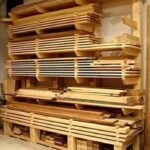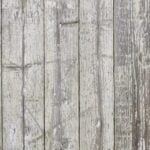Are you wondering what finish to use on a woodworkers mallet? Woodworkers mallets are essential tools for shaping and assembling wood, and choosing the right finish is crucial for their longevity and performance. In this article, we will explore the different finishes available for woodworkers mallets, including oil, varnish, lacquer, and wax. Understanding the characteristics and application of each type of finish will help you make an informed decision when it comes to preserving and protecting your woodworkers mallet.
When it comes to woodworkers mallets, selecting the appropriate finish is important not only for aesthetic reasons but also for ensuring durability and functionality. Different finishes offer varying levels of protection and enhancement for the wood, so it’s essential to understand the options available. We will delve into the details of each type of finish and provide insight into their pros and cons so that you can make an informed choice based on your specific needs.
Whether you are a seasoned craftsman or a novice woodworker, understanding the benefits and considerations of different finishes for woodworkers mallets is vital. Factors such as ease of application, durability, maintenance requirements, and overall appearance play a significant role in deciding which finish is best suited for your woodworking projects. By exploring the various options available, you can confidently choose a finish that will prolong the life of your woodworkers mallet while maintaining its functionality and visual appeal.
Understanding Different Finishes for Woodworkers Mallets
When it comes to choosing the right finish for a woodworkers mallet, there are several options to consider. Each type of finish offers unique characteristics and benefits that can impact the appearance and functionality of the mallet. Understanding the different finishes available is essential for woodworkers who want to achieve the perfect balance of protection and aesthetics for their tools.
Explanation of Finishes
There are several types of finishes commonly used on woodworkers mallets, including oil, varnish, lacquer, and wax. Each of these finishes provides a protective layer that helps prevent damage from moisture, wear, and impact. Oil finishes penetrate the wood to nourish and protect it from within, while varnish forms a durable coating on the surface. Lacquer offers a clear and glossy finish, while wax creates a smooth and lustrous appearance.
Pros and Cons
It’s important to weigh the pros and cons of each type of finish when deciding what finish to use on a woodworkers mallet. For example, oil finishes enhance the natural beauty of the wood but may require more frequent reapplication. Varnish provides excellent protection but may alter the appearance of the wood.
Lacquer offers a high-gloss finish but can be challenging to repair if damaged. Wax provides a soft sheen but may not be as durable as other finishes.
Factors to Consider
When choosing a finish for a woodworkers mallet, there are several factors to take into account. Consider the type of wood used in the mallet, its intended use, and personal preferences regarding appearance and maintenance. Different finishes may interact differently with specific types of wood, so it’s essential to choose a finish that complements both the material and how it will be used in woodworking projects.
Oil Finishes for Woodworkers Mallets
Woodworkers often face the decision of what finish to use on their mallets, as the right finish can enhance both the appearance and functionality of the tool. One popular option for finishing woodworkers mallets is using oil finishes. These finishes are known for their ability to penetrate into the wood, providing a natural and durable coating that protects the mallet from wear and tear.
Detailed Description of Oil Finishes
Oil finishes, such as tung oil or linseed oil, are natural options that enhance the natural grain and color of wood. They provide a warm and rich appearance while offering protection against moisture and daily use. These finishes seep into the wood fibers, creating a bond with the surface that strengthens it over time.
Application Process and Maintenance Tips
When applying oil finishes to a woodworkers mallet, it is important to ensure that the surface is clean and free of dust or debris. Applying thin coats of oil with a clean cloth or brush allows for better absorption into the wood.
After allowing each coat to dry completely, sanding between coats can create a smooth and even finish. It is also essential to follow up with maintenance by reapplying oil as needed to maintain the protective layer on the mallet’s surface.
Varnish Finishes for Woodworkers Mallets
When it comes to choosing the right finish for a woodworkers mallet, varnish is a popular option that offers durability and protection. Varnish is a transparent, hard, protective finish or film primarily used in wood finishing. It provides a glossy, attractive appearance and is resistant to both heat and chemicals. There are different types of varnishes available, including polyurethane, alkyd, and phenolic resin varnishes, each with its own characteristics and suitability for woodworkers mallets.
Polyurethane varnish is known for its high resistance to abrasions, as well as its waterproof and heat-resistant properties. This makes it an ideal choice for woodworkers mallets that may be subjected to heavy use and exposure to various elements. Alkyd varnish, on the other hand, dries quickly and is easy to apply, making it a popular choice among woodworkers looking for a convenient yet effective finish. Additionally, phenolic resin varnish offers exceptional heat resistance and durability.
Application techniques for varnish finishes on woodworkers mallets typically involve applying multiple thin coats with sanding in between to achieve a smooth and glossy surface. It’s important to follow the manufacturer’s instructions regarding drying times and proper ventilation during application to ensure the best results.
Ultimately, the choice of varnish finish for a woodworkers mallet depends on factors such as intended use, desired level of glossiness, and personal preference. Considering the benefits of varnish finishes in terms of durability and protection against wear, it’s no wonder why many woodworkers opt for this type of finish on their mallets.
| Types of Varnish | Characteristics |
|---|---|
| Polyurethane Varnish | High resistance to abrasions |
| Alkyd Varnish | Dries quickly and easy to apply |
| Phenolic Resin Varnish | Exceptional heat resistance and durability |
Lacquer Finishes for Woodworkers Mallets
When considering what finish to use on a woodworkers mallet, lacquer is a popular choice due to its durability and professional appearance. Lacquer finishes create a hard, protective coating that is resistant to moisture, chemicals, and general wear and tear. This makes it an ideal option for woodworkers mallets that will be used frequently in different working conditions.
There are two main types of lacquer finishes: nitrocellulose lacquer and catalyzed lacquer. Nitrocellulose lacquer dries quickly and provides a glossy finish, while catalyzed lacquer is more durable and offers a matte or satin finish. Both types of lacquers can be applied using spray equipment for a smooth and even coat on the woodworkers mallet.
One of the advantages of using lacquer finishes on woodworkers mallets is their ability to provide a high level of protection without adding bulk or altering the natural look of the wood. However, one drawback to consider is that lacquers can be more difficult to repair or touch up compared to other finishes like wax or oil.
It’s important to weigh these pros and cons when deciding if a lacquer finish is the right choice for your woodworkers mallet project.
| Advantages | Disadvantages |
|---|---|
| Durable and resistant to moisture | Difficult to repair or touch up |
| Create a smooth, professional appearance | May require special equipment for application |
Wax Finishes for Woodworkers Mallets
Woodworkers mallets are essential tools for woodworking, used for driving chisels or tapping wooden joints together. Choosing the right finish for a woodworkers mallet is crucial to ensure its longevity and performance. One popular finish option for woodworkers mallets is wax, which provides a protective and smooth surface. When considering what finish to use on a woodworkers mallet, it’s important to understand the benefits and application methods of wax finishes.
Wax finishes are known for their natural and non-toxic properties, making them a popular choice among woodworkers who prefer environmentally-friendly options. There are several types of waxes that can be used as finishes for woodworkers mallets, including beeswax, carnauba wax, and paraffin wax. Beeswax is a common choice due to its water-resistant qualities, while carnauba wax offers a harder and more durable finish. Paraffin wax is easy to apply and provides a glossy shine.
When applying wax finishes on woodworkers mallets, it’s important to properly prepare the surface by sanding it smooth and removing any dust or debris. Using a clean cloth or brush, the wax can be applied in thin layers until the desired level of protection and sheen is achieved. Buffing the surface after each application can help enhance the shine of the finish.
In terms of maintenance, wax finishes on woodworkers mallets may require periodic reapplication to maintain their protective properties. Additionally, regular cleaning with a soft cloth can help keep the surface free of dirt and grime. Overall, choosing a wax finish for a woodworkers mallet offers an easy application process and natural protection that can enhance both the appearance and performance of the tool.
Comparing Finishes for Woodworkers Mallets
When it comes to choosing the right finish for a woodworkers mallet, there are several options available, each with its own set of pros and cons. Understanding the differences between these finishes is crucial in order to make an informed decision. The main types of finishes for woodworkers mallets include oil, varnish, lacquer, and wax. Each type offers unique benefits and considerations that should be taken into account based on the specific needs and preferences of the woodworker.
Oil finishes are popular among woodworkers for their ability to enhance the natural beauty of the wood while providing protection against moisture and wear. Common types of oils used for woodworkers mallets include linseed oil, tung oil, and Danish oil.
The application process typically involves multiple coats being rubbed into the surface of the mallet, allowing time to penetrate and dry between applications. Proper maintenance of oil finishes involves periodic reapplication to keep the mallet looking and performing at its best.
Varnish finishes are known for their durability and resistance to scratches and abrasions. They create a hard protective layer over the wood that can withstand heavy use. Varnishes come in various forms such as polyurethane, spar varnish, and water-based varnish, each with its own characteristics.
Application techniques may differ depending on the type of varnish used, but generally involve brushing or spraying multiple coats onto the mallet. Maintaining varnish finishes involves regular cleaning and potentially recoating if signs of wear or damage appear.
Lacquer finishes offer a quick-drying solution that provides a durable yet flexible protective layer on woodworkers mallets. They are resistant to heat and chemicals, making them suitable for both indoor and outdoor use. However, lacquer finishes may require more skillful application due to their fast-drying nature. Regular maintenance includes periodic cleaning to remove dirt and grime without damaging the finish.
When comparing these different finishes for woodworkers mallets, it’s important to consider factors such as intended use, desired appearance, ease of application, maintenance requirements, and compatibility with specific wood types. Making an informed decision based on these considerations will ensure that your woodworkers mallet is finished with a product that meets your needs and expectations.
By carefully weighing these factors against your specific requirements as a woodworking professional or enthusiast – as well as considering expert advice – you can confidently select a finishing material that is ideal for your wooden project.
Tips for Maintaining and Repairing Finishes on Woodworkers Mallets
In conclusion, the choice of finish for a woodworker’s mallet is crucial in ensuring its longevity and performance. Each type of finish, whether it be oil, varnish, lacquer, or wax, has its own set of advantages and disadvantages. It is essential to consider the specific wood type and intended use of the mallet when deciding on the most suitable finish.
Once a finish has been applied to the woodworker’s mallet, proper maintenance is key to preserving its appearance and functionality over time. Regular maintenance practices such as cleaning and reapplication of the finish as needed can significantly prolong the life of the mallet. Additionally, being mindful of any damage or wear to the finish and addressing it promptly with appropriate repair techniques will ensure that the mallet continues to serve its purpose effectively.
Ultimately, by understanding the characteristics of different finishes and their application processes, woodworkers can make an informed decision on what finish to use on their mallets. Whether prioritizing durability, aesthetics, or ease of maintenance, there is a suitable finish available for every woodworker’s needs. The careful selection and diligent upkeep of a quality finish will contribute to the overall success and satisfaction in using a woodworker’s mallet for various woodworking projects.
Frequently Asked Questions
What Is the Best Oil for Wooden Mallet?
The best oil for a wooden mallet is typically mineral oil or linseed oil. These oils help to nourish the wood, prevent drying and cracking, and enhance its natural beauty.
What Is the Best Material for a Wooden Mallet?
The best material for a wooden mallet is often hardwood such as maple, beech, or hickory. These woods are durable and dense enough to withstand the force of hammering without splintering or breaking easily.
What Is Used in Carpentry Knock Wooden Pieces?
In carpentry, wooden pieces are usually knocked together using a mallet. This tool is specifically designed for this purpose, with a large head to deliver force without damaging the wood and a sturdy handle for control and precision.

Hi everyone! I’m a woodworker and blogger, and this is my woodworking blog. In my blog, I share tips and tricks for woodworkers of all skill levels, as well as project ideas that you can try yourself.





